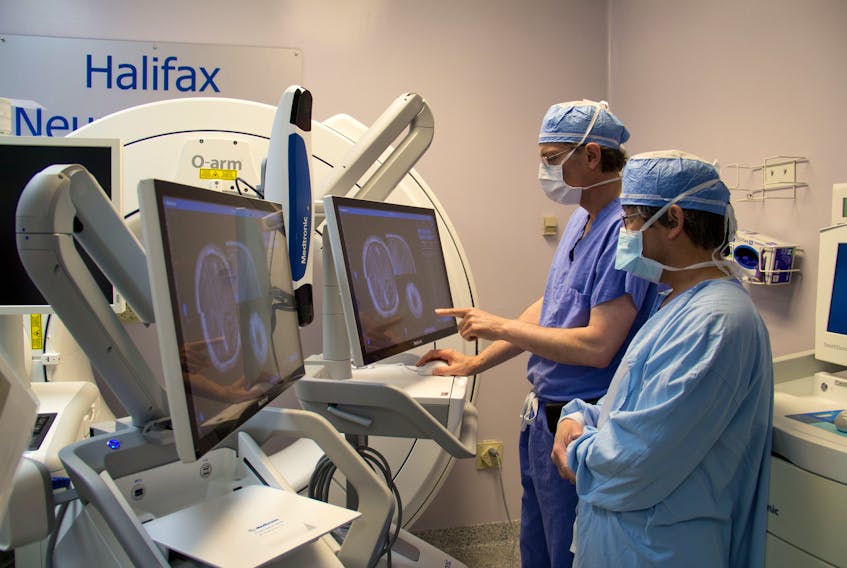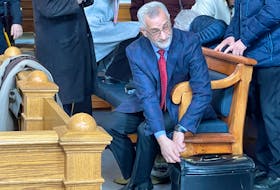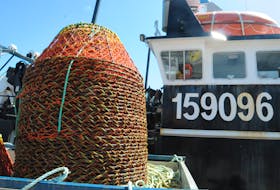Halifax neurosurgeons are the first in Canada to use cutting-edge robotic technology to perform a brain biopsy.
The robot can be programmed to pinpoint the precise location where tissue samples can be extracted from a tumour, said Dr. David Clarke, head of neurosurgery at Dalhousie University and the Nova Scotia Health Authority.
His team, which included surgeons Murray Hong and David Brandman, used the device - called a Stealth AutoGuide - to perform a biopsy last week on a patient at the QEII Health Sciences Centre.
Clarke said the technology represents a major step forward in surgery.
The robot allows surgeons to complete brain biopsies in about half the time it would take to manually plan for the procedure, and it’s also safer for the patient, Clarke said in a phone interview Tuesday.
“If you imagine us trying to get at a tissue somewhere deep in the brain, a tumour that needs to have a biopsy, what’s critical for us is to not only reach the target so that we can obtain successfully a piece of tissue that will give the pathologists enough information to make a diagnosis that’s important for the patient’s treatment, but just as critical, we need to get there in a way that avoids any damage to the surrounding brain.
"And that can be very tricky because of the various important structures that we may have to contend with, including various blood vessels.”
Whereas the usual surgical incision for biopsies is several centimetres, the precision of the robotic tech allows for an incision of about one centimetre.
The Stealth AutoGuide also can be easily integrated into the technology already in use, such as neuro-imaging.
Another bonus is its size, about two-thirds that of a shoe box, Clarke said, so it doesn’t clutter up the operating room.
He first caught wind of the robot at a neurosurgery conference in the United States two years ago. Clarke immediately contacted the company that makes it, Medtronic, in order to get access to Stealth AutoGuide for preclinical research in Halifax.
His team has worked in collaboration with a surgical team in Austria, which pioneered the preclinical research over the past several years. The device has been used in about 10 other sites around the world, Clarke said.
The QEII was the only North American site to perform preclinical trials, leading to Health Canada’s recent decision to approve the device for clinical use in Canada.
As a result, Medtronic gave the QEII a “very significant” deal in the purchase of the device, Clarke said. He declined to give a specific figure.
“We wanted to ensure we had that technology for our patients as soon as possible.”
Clarke figures the robot will be used to perform over 100 biopsies a year at the hospital. He will also explore use of the device for other procedures such as implanting electrodes in the brain for diagnostic or treatment purposes.









